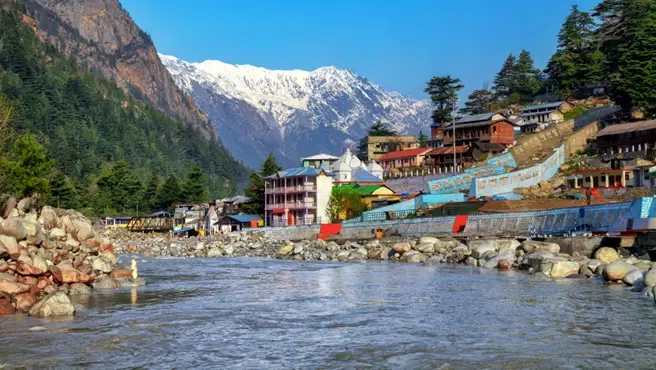
Hotels
•03 min read

The Sar Pass Trek is a mesmerizing journey through the Himalayas. With stunning views and peaceful landscapes, it offers a perfect blend of adventure and serenity. This blog post answers common questions about the sar pass trek itinerary. You will learn about the route, cost, difficulty, and highlights of this incredible trek.
The Sar Pass Trek begins in Kasol and ends in Barsheni. It is popular among beginners and experienced trekkers. The trek promises an experience filled with awe and wonder at every step.
Below is a day-by-day breakdown of the itinerary:
Day 1: Trek from Kasol to Grahan Village. This walk takes about 5-6 hours. You pass through varied terrain with gentle slopes and occasional forest paths.
Day 2: From Grahan Village, the journey continues to Min Thach in 4-5 hours. The changing scenery keeps the trek exciting.
Day 3: Trek from Min Thach to Nagaru. This leg takes around 3-4 hours and offers steady terrain.
Day 4: The longest stretch is from Nagaru to Biskeri Thach via the magnificent Sar Pass, lasting 8-9 hours. This part of the sar pass trek route is full of dramatic landscapes.
Day 5: The final leg from Biskeri Thach to Barsheni concludes the trek in about 3-4 hours. Trekkers then return to Kasol with memories etched forever.
Each day covers specific distances and altitudes. The trek map shows the highest altitude of 13,800 ft reached at Sar Pass. Knowing the day-to-day duration helps you prepare for the physical challenge ahead.
The sar pass trek route is filled with wonderful landmarks. In addition to Grahan, Min Thach, and Nagaru, you will pass Sar Pass and Biskeri Thach. The route covers forest paths and sometimes snow-covered trails during the early phase of the season. The natural beauty of each segment makes the trek memorable.
A detailed trek map is essential. It helps with navigation and understanding the journey. The map marks key elevations and landmarks. It also highlights that the trek's highest point sits at around 13,800 ft. Knowing the map details is beneficial for planning breaks and acclimatization.
The best time for the sar pass trek is during the months of May to June and September to October. These months offer pleasant weather and clear trails. Trekking in November, December, and January is not advisable due to heavy snow and less stable trails.

The sar pass trek cost typically ranges between ₹6,000 and ₹10,000 per person. This fee usually includes meals, a sar pass trek guide, permits, and sometimes additional support. There may be optional expenses such as gear rental and extra transportation costs.
This trek is deemed moderate in difficulty. Beginners with basic fitness levels can enjoy the trek while experiencing a slight challenge. The moderate difficulty of the trek means that proper preparation and a steady pace make it enjoyable. Spending five days on the route allows you to enjoy the journey fully while keeping the duration manageable.
The trek has many highlights. One of the most striking is the snow-covered Sar Pass. You will also find lush meadows and endless panoramic views of the Parvati Valley. Another unique experience is camping under starry skies and even sliding down a snowy slope during rest breaks.
Your sar pass trek packing list should include essential gear. Pack sturdy trekking shoes, waterproof jackets, and thermal wear. A sleeping bag and layered clothing are a must. Do not forget items like sunscreen, a personal first aid kit, trekking poles, and a reusable water bottle.
Pro Tip: Packing Smart for High-Altitude Treks
Prioritize lightweight, multipurpose gear to avoid overpacking. A well-organized backpack can make your trekking experience significantly more enjoyable.
Good fitness and proper training are important for the trek. Simple cardio, strength, and flexibility exercises can improve your readiness. Always remember to acclimatize and stay hydrated at high altitudes.
Safety guidelines are essential. Follow your guide's instructions carefully and carry all required documents such as permits and identification. Basic precautions ensure you have a safe journey.

The highest point of the trek, Sar Pass, is about 13,800 feet above sea level.
The ideal time is May to June and September to October. During these months, the weather is pleasant and the trails are clear.
Yes, the trek is suitable for beginners with a basic level of fitness and preparation.
The cost is generally between ₹6,000 and ₹10,000 per person, depending on the included services and amenities.
Conclusion
The Sar Pass Trek is a dream adventure. It blends natural beauty with a sense of thrilling discovery. With a clear understanding of the itinerary, the route, cost, and trek preparation, you are now well-equipped for this Himalayan journey. Every step of the trek offers a new experience that fuels the explorer within. Bring your enthusiasm, pack smart, and enjoy every moment of this magical adventure.